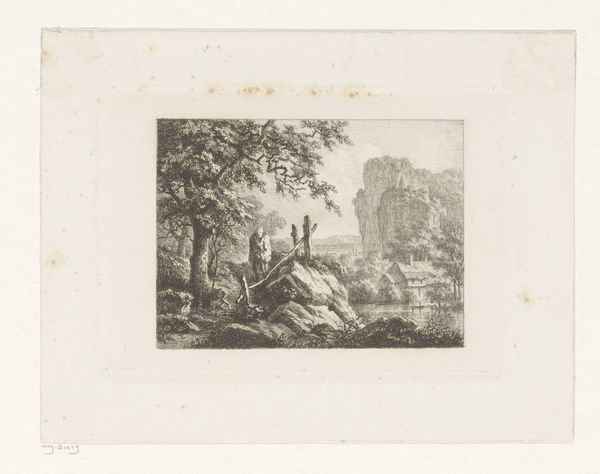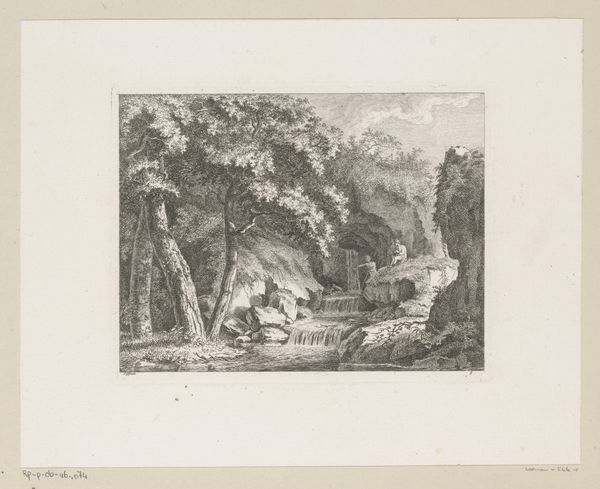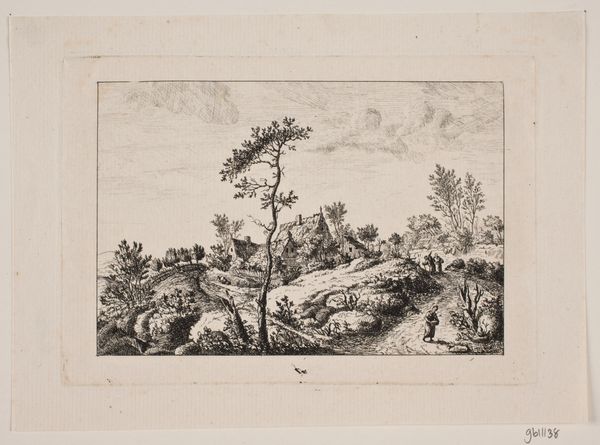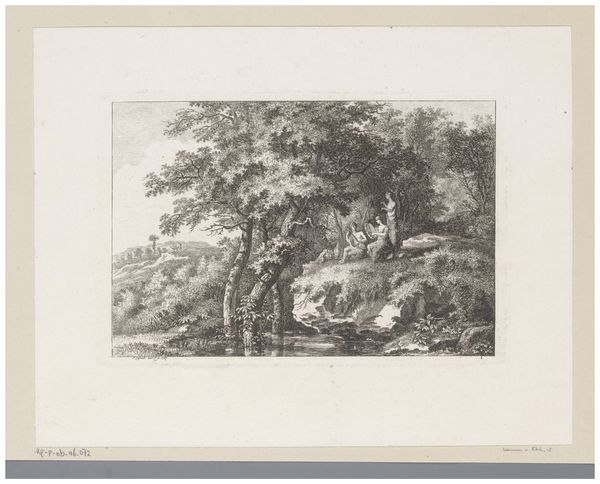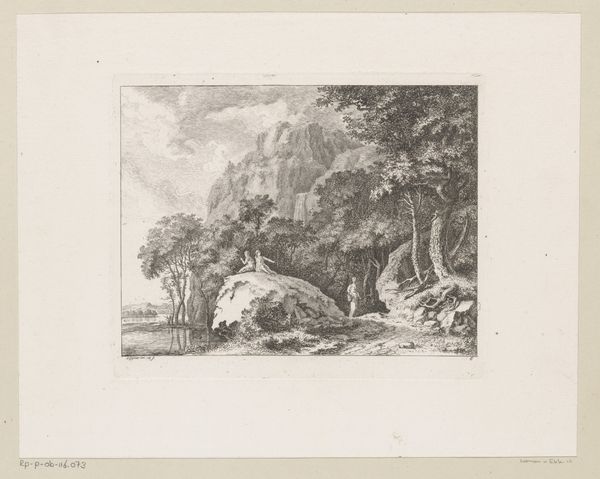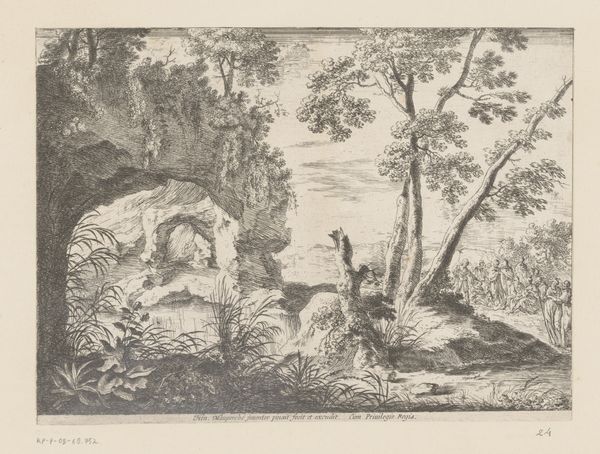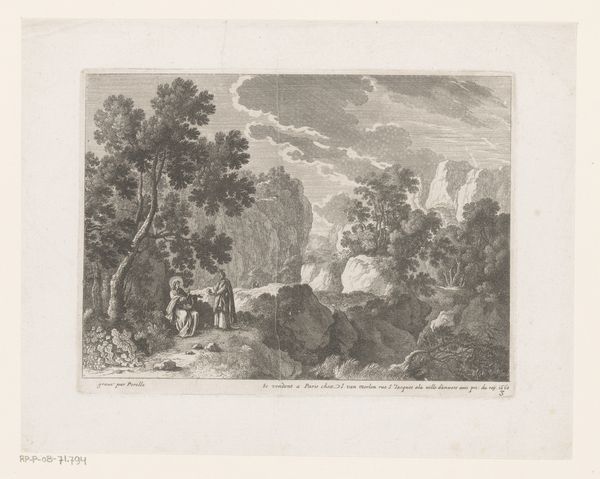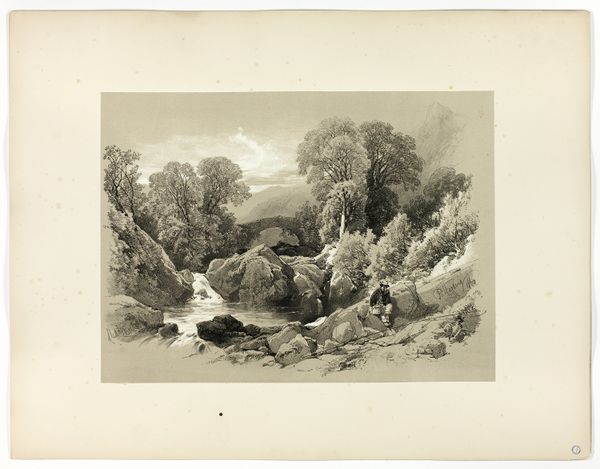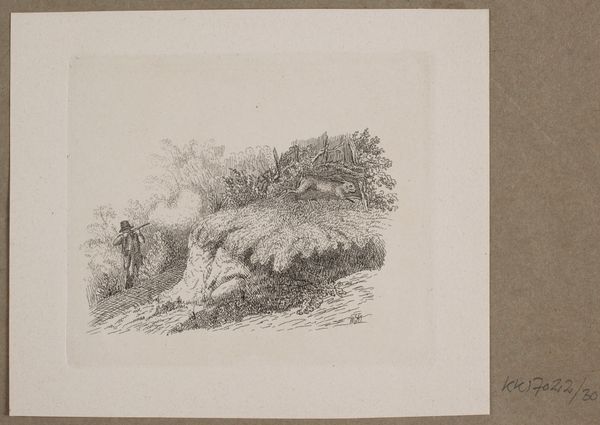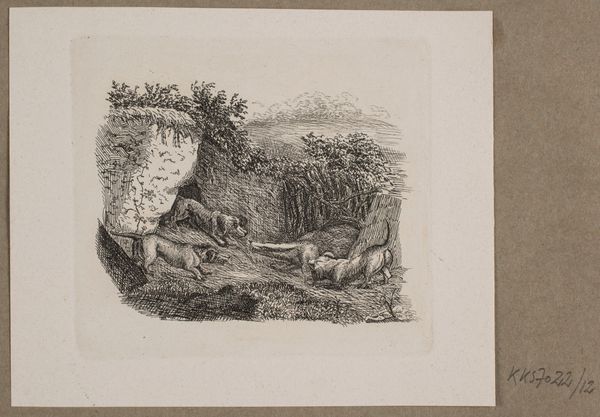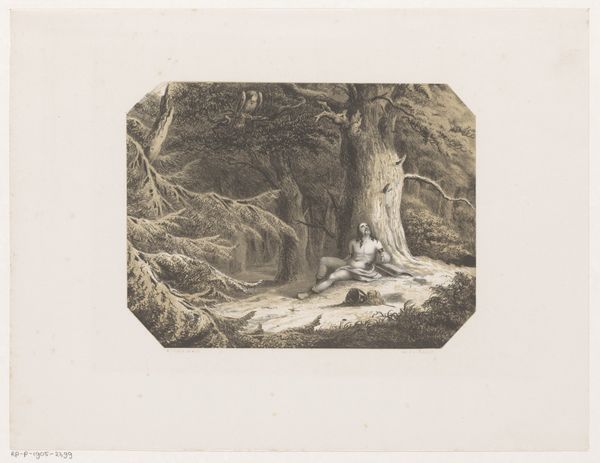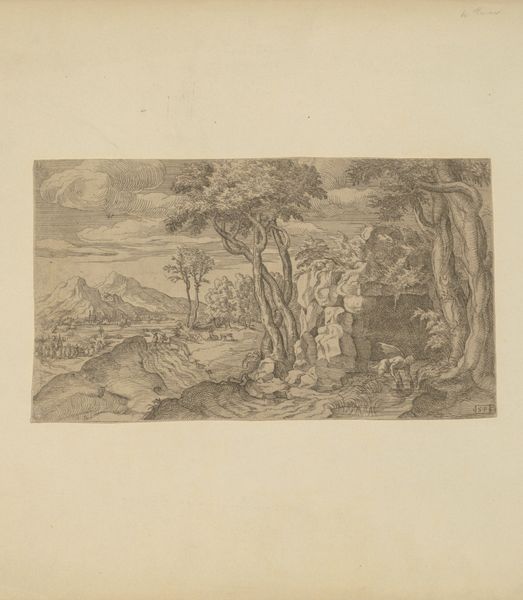
etching, engraving
#
narrative-art
#
etching
#
landscape
#
romanticism
#
engraving
Dimensions: height 165 mm, width 187 mm
Copyright: Rijks Museum: Open Domain
Curator: Let's take a look at "Landschap waarin dieren vluchten voor het opkomende onweer"—Landscape with Animals Fleeing the Approaching Storm—an 1836 etching and engraving by Joseph Coomans. The stark contrasts immediately grab you, don't they? Editor: They do. It's a powerful scene. There's a real sense of urgency; the landscape itself seems to be holding its breath. I wonder what sort of cultural anxieties were being projected onto the natural world at the time this was made? Curator: An excellent question. The Romantic era had a huge preoccupation with nature's sublimity, and here we see Coomans' labor in achieving tonal depth. Notice the incredible fineness of the etching. The time, skill, and multiple stages to pull a print like this speaks to the economic support behind its production, especially at a school of engraving. Editor: Exactly. Consider also that romanticism had its privileges. For those excluded, its emphasis on raw emotion could also justify some problematic behaviour. Take how the animals seem symbolic, perhaps a stand-in for more vulnerable human populations who must sense approaching upheaval. Are they truly being protected, or are they being forced into dangerous situations by others? Curator: The material processes and tools here serve an evocative composition. How many different tools were needed to create the scene of flight—the varied line weights and densities? Editor: We can also look at which human voices are privileged here, which narratives of nature are valued and circulate more readily within a specific society, what kinds of knowledge production these kinds of images enable. What is not depicted is just as crucial as what is. Curator: I think that is so apparent in its use of light and shadow to evoke drama and its placement in the physical world, such an attention to form. The texture achieved is extraordinary—I keep thinking about the physical labor involved in crafting such minute detail. Editor: Right, and those dark patches could be interpreted in terms of anxieties tied to identity, gender, and even the social classes in early 19th-century Europe. Coomans positions this 'landscape' as a kind of theater, presenting nature but also concealing particular human realities behind an allegory. Curator: Thinking about art through the lens of its material reality really highlights the human endeavor. Editor: By bridging the art historical context to more critical conversations, hopefully we see its layers that reveal and conceal power dynamics within representation.
Comments
No comments
Be the first to comment and join the conversation on the ultimate creative platform.
